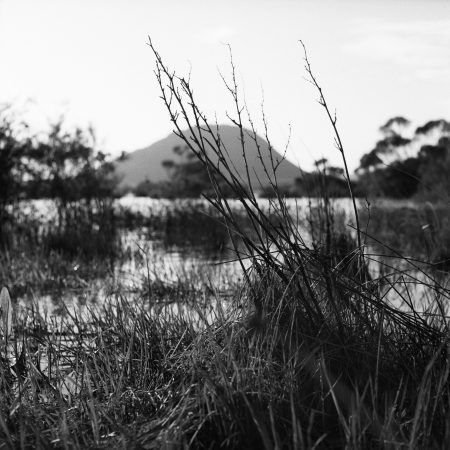Whangarei Art museum - hikurangi wetlands

There is a Hikurangi Wetlands exhibition on at the Whangarei Art Museum (located behind the information centre at Town Basin) where locals Lisa Clunie and Thorsten Hoppe explore Hikurangi wetlands history and importance through photos and soundscapes. Here is a brief description of what the exhibition covers:
Lisa Clunie and Thorsten Hoppe’s wet_land arises out of this reparative impulse, specifically concentrating on the Hikurangi Wetlands near Whangārei. Even the area’s name is complex. A common name is “the Hikurangi Swamp”. Others refer to it as wetland, repo or floodplains. Before upward of 96% of the area was drained, these were one of the largest wetlands in New Zealand. Clunie creates the visuals and Hoppe provides a sound installation and soundscape. Clunie and Hoppe work together in gathering and editing photographs, interviews, and audio recordings. Their volunteering at the local Hikurangi Historical Museum is an important part of their research process, engaging directly with the local community rather than coming in from the outside with preconceived ideas and judgements.
In twenty-first century Aotearoa, wetlands are sources of conflict between those wishing to preserve their native, environmentally important ecologies and recognising their importance in flood management (“the kidneys of the earth”), and those who want to use or exploit those resources. Much kahikatea from the swamp ended up as butter boxes for places like the Hikurangi Dairy Factory, and the wetland drained and converted into agricultural land. Clunie and Hoppe want to show the Hikurangi Swamp and its transformation over time from the diverse perspectives of those who live on, work in, or otherwise engage with its ecology and environment. This is an extensive community, despite their often-differing opinions about ecology and land/waterway use.
While there is a lot still to be done, there are farmers in Hikurangi working in a proactive way with local hapū and DOC, fencing waterways, controlling invasive species, putting part of their land into QEII reserves, and helping to release kiwi back into the habitat. Local hapū are replanting waterways and working with scientists to monitor tuna (eels) and native fish populations. Kaitiakitanga is a central concept developing increased holistic awareness for all in the care of the awa (river) and its many tributaries and ecological niches, its plants and animals.
A word from Lisa:
We wanted to thank all of you who have visited our exhibition wet_land about the Hikurangi Repo/Swamp since it opened end of November. That seems so long ago now! It was great to see so many of you at the opening, and we have enjoyed talking to those of you who pop in on Saturdays when we are there. It is running until the 21st of Feb if you haven't had a chance to get along yet.
Starting this weekend is a programme of events as a part of the exhibition. We kick it off with an artist talk this Saturday the 16th at the Whangārei Art Museum. On Sunday we have planned a field trip to visit the Hikurangi Museum, then out to the swamp for drawing (weather permitting). Please see below for further events. Please join us, or share with anyone you know who may be interested.
We are also at the Whangārei Art Museum every Saturday between 10-12 to talk about the show. So that is a good time to visit if you would like a personal tour!
Please note that the Jack Morgan Museum in Hūkerenui has a fascinating exhibition on at the moment called 'Nothing Stops the Floods', which provides information on major weather events and their effects in the Hikurangi Swamp. It is definitely worth a visit.
Best to get in touch with either myself or Thorsten if you have any questions.
Hope to see you soon
Ngā mihi nui
Lisa and Thorsten